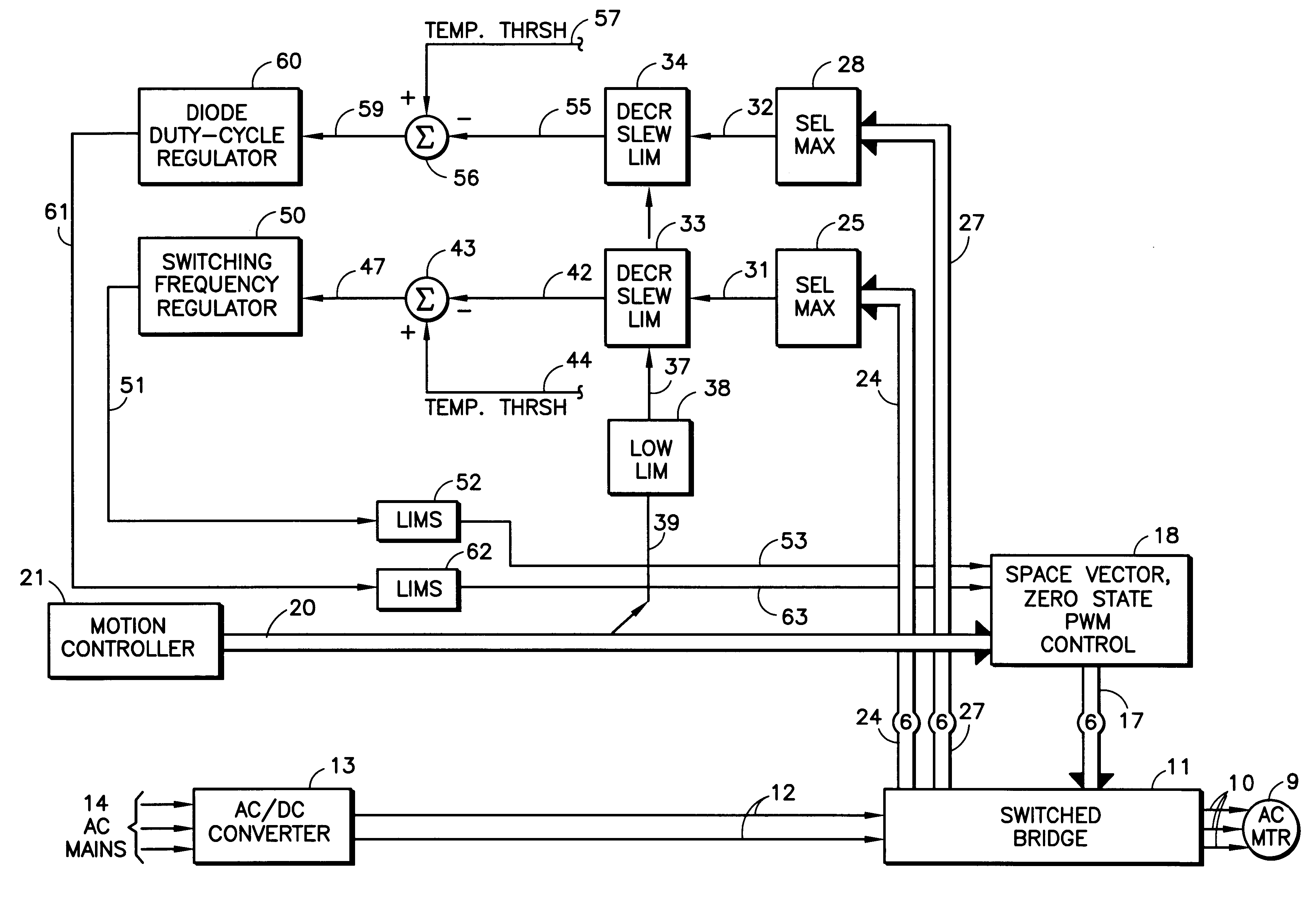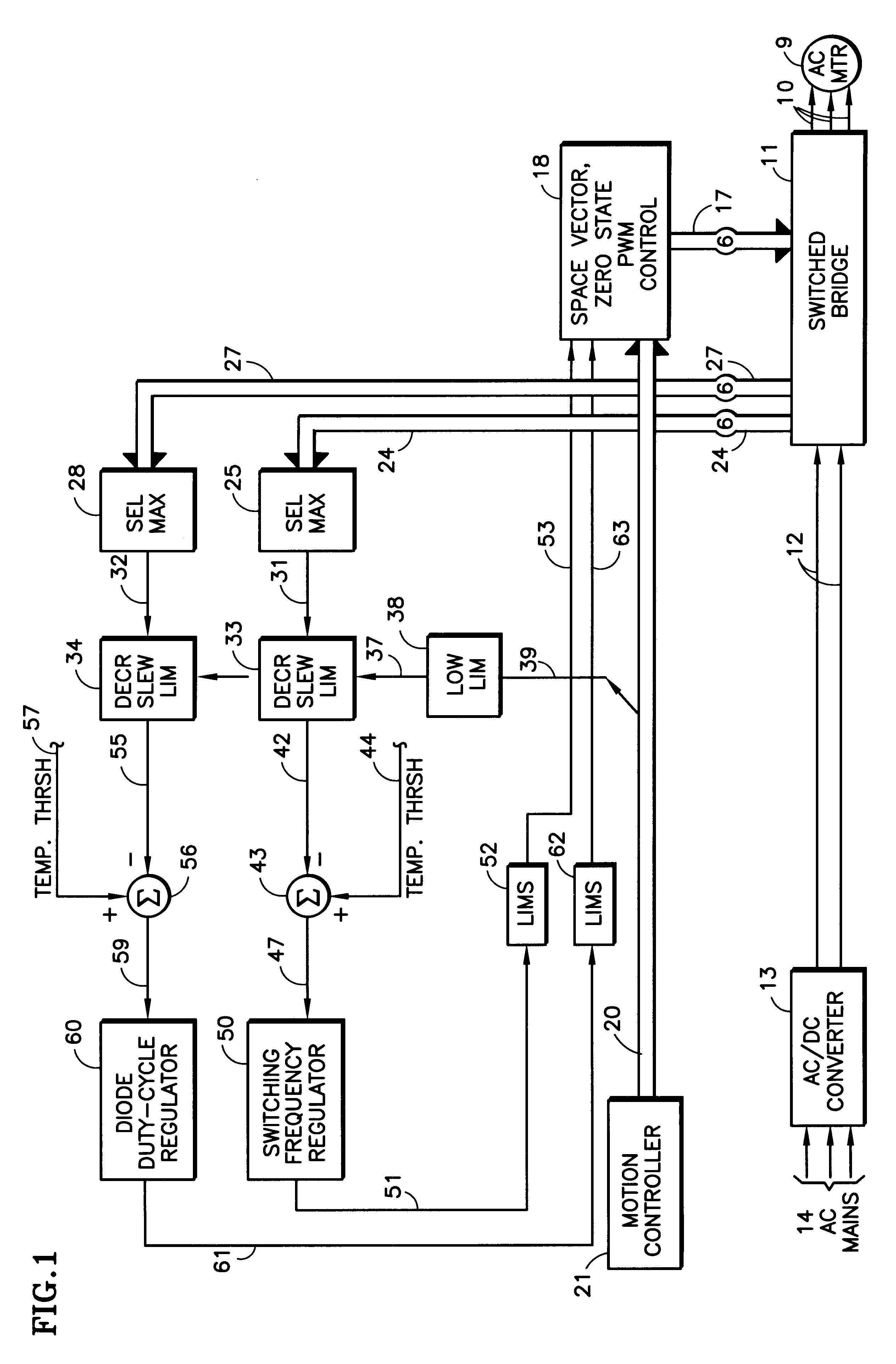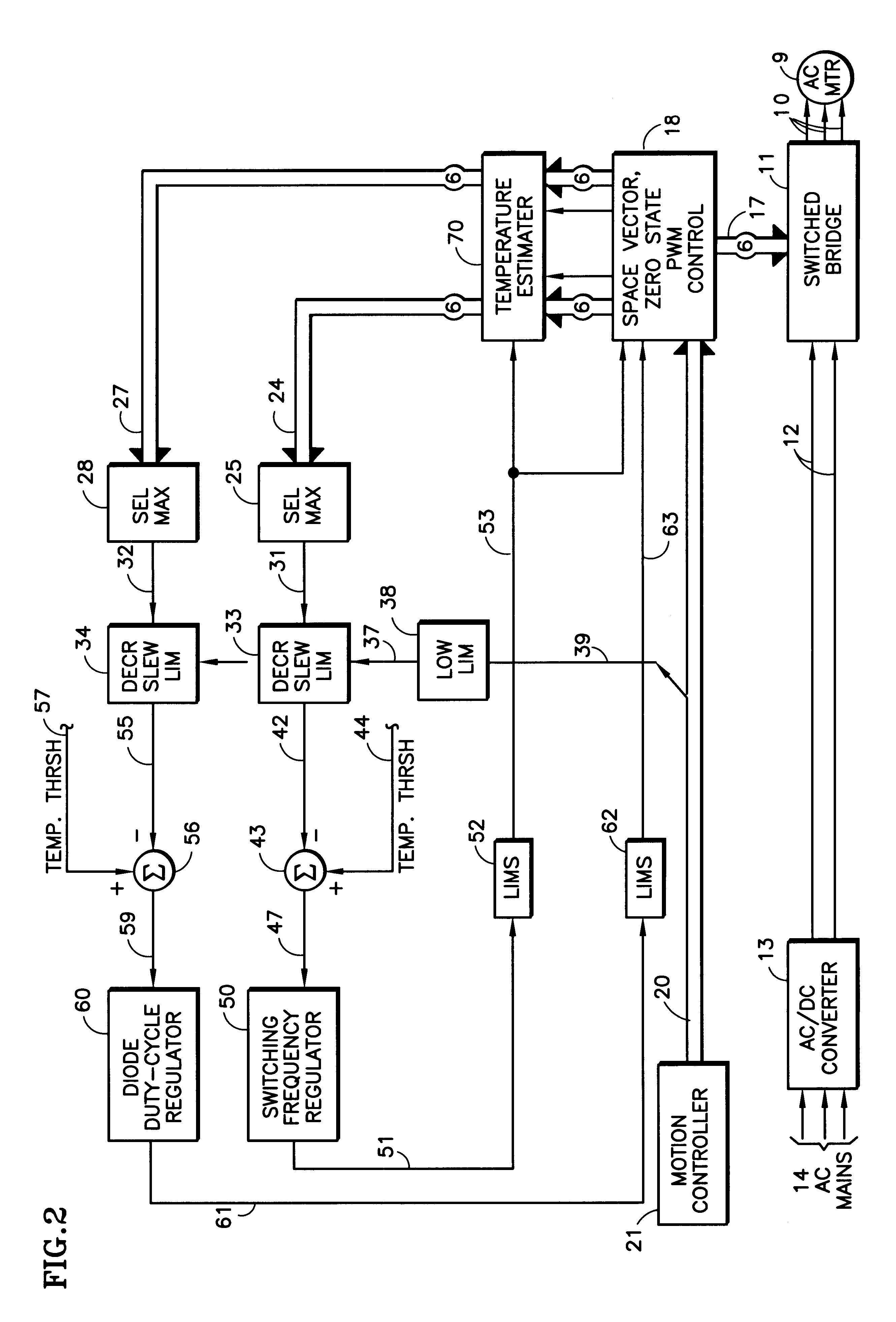Motor drive parameters
a motor drive and parameter technology, applied in the direction of motor/generator/converter stopper, motor/electric converter control, instruments, etc., can solve the problems of motor drive transistor switching loss much higher, mechanical stress, and ultimate so as to reduce mechanical failure of bonded wires, improve variable motor drive operation, and avoid excessive thermal stress
- Summary
- Abstract
- Description
- Claims
- Application Information
AI Technical Summary
Benefits of technology
Problems solved by technology
Method used
Image
Examples
Embodiment Construction
Referring to FIG. 1, an AC motor 9 (such as an induction motor or a permanent magnet motor) is provided power over lines 10 from a switch bridge 11 which in turn is provided DC power over lines 12 from an AC to DC converter 13, which is powered by AC mains 14. The switch bridge 11 may typically comprise a bridge having six insulated gate bipolar transistors (IGBTs), each with an anti-parallel diode, the operation of which is controlled by six individual switching signals on lines 17 from a space vector, zero state, pulse width modulation (PWM) control 18. The control 18 may be conventional or may take the form of that disclosed in the aforementioned applications. In the exemplary embodiments herein in which the motor 9 is part of an elevator drive, the PWM control 18 will respond to signals on a trunk of lines 20 from a motion controller 21 of any conventional type which determines when the elevator should stop, how it should accelerate and to what speed, and when it should slow dow...
PUM
 Login to View More
Login to View More Abstract
Description
Claims
Application Information
 Login to View More
Login to View More - R&D
- Intellectual Property
- Life Sciences
- Materials
- Tech Scout
- Unparalleled Data Quality
- Higher Quality Content
- 60% Fewer Hallucinations
Browse by: Latest US Patents, China's latest patents, Technical Efficacy Thesaurus, Application Domain, Technology Topic, Popular Technical Reports.
© 2025 PatSnap. All rights reserved.Legal|Privacy policy|Modern Slavery Act Transparency Statement|Sitemap|About US| Contact US: help@patsnap.com



